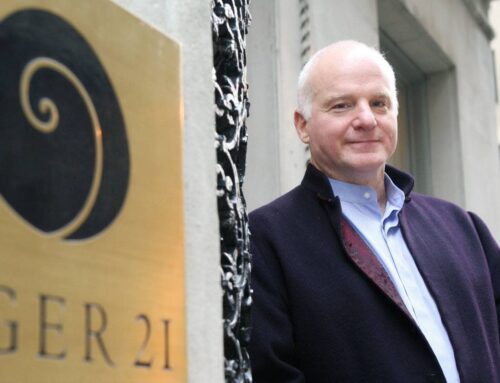Here’s what major Wall Street banks are telling clients to do about the shutdown
October 1, 2025
Wall Street banks largely told clients to expect a typical short shutdown and bet on a comeback in stocks if there’s any major weakness in equities. The stock market Wednesday was lower , but the losses were muted as investors waited to see more developments on the ongoing negotiations from Republicans and Democrats. (For the latest on the shutdown, see here .) The Street does fear that if President Donald Trump follows through with his threatened permanent layoffs that could add a new wrinkle to this stoppage and pressure an already fragile economy. An extended economic data blackout was another twist that could pressure markets by causing uncertainty about the Federal Reserve’s next move. But Wall Street economists largely believe the Fed will continue cutting rates at its meeting later this month even if the government remains shut. Gold was a commen recommendation for a hedge among the Wall Street crowd. “This market hasn’t pulled back over 3% since April and now we have a reason to pause,” Jay Woods, chief market strategist at Freedom Capital Markets, told CNBC. “But that’s all this should be, a mere pause in a rally giving dip buyers an opportunity to be active again.” Here’s what all the major banks were saying: Raymond James: “Alongside the anticipated shutdown, the memo sent by Director of the Office of Management and Budget (OMB) Russ Vought for agencies to for large-scale reductions in force (RIF) targeting employees in discretionary programs, marks a notable departure from traditional shutdowns, where furloughs are often temporary and workers are recalled once funding resumes. This will likely cause additional market volatility as the traditional ‘playbook’ for a government shutdown — historically brief, politically damaging for the party perceived as causing them, and ultimately being resolved through compromise the party initiating it caving — may no longer apply.” “We do not anticipate this will materially impact Federal Reserve monetary policy decisions– if anything, weaker data could increase pressure for accelerated rate cuts given economic risks, especially if furloughs negatively impact employment and consumer data.” Evercore ISI: “We don’t see major macroeconomic implications of a shutdown, as long as it lasts less than a few weeks like all the prior shutdowns. CBO reconfirmed today that the vast majority of lost economic activity from the 2018-19 shutdown was made up when the government re-opened, and we’d generally expect the same this time, likely within the quarter given the shutdown will occur early in Q4.” Canaccord Genuity: “The long 35-day shutdown in 2018 under the first Trump administration contributed to a 0.4% reduction in annualized GDP growth in Q1 of 2019 (CBO est.). This potential hindrance to growth adds another layer of uncertainty to an already volatile policy outlook. While it is difficult to predict the length of the shutdown considering increasing polarization within the government, they have lasted ~8 days on average. We don’t expect this shutdown to have a large economic impact unless it extends over a long period.” “Shutdowns tend to be “buy the news” events, especially for small-caps: Looking at past government shutdowns, the lead-up to shutdowns is typically slightly negative with the average return for the S & P500 during the week leading up to the shutdown at -0.3%; the long Trump I shutdown pushed the S & P500 down 7.1% in the week leading up to it. The same is true DURING shutdowns, with the S & P500 down on average ever so slightly at -0.1%. However, stocks tend to do well once shutdowns end, with the S & P500 returning on average 3.3% over three months, 7.8% over six months, and 11.5% over 12 months. These historical returns are even greater for small-cap stocks, with the Russell 2000 up on average 7.1%, 16.5%, and 17.9% over those same periods.” Deutsche Bank: “There are no signs of an imminent compromise between the White House and the Democrats, and the Republican leadership in the Senate suggested that any further votes may not take place until after the Yom Kippur holiday on Thursday.” Citi Research: “Overall, we think that equity markets are perhaps anticipating a shorter shutdown given the current price action. In any case, should the impasse persist, our study points to some potential short-lived turbulence, though this is usually followed by a sharp recovery once resolved. We think the combination of strong optimism around AI, layered on top of a more accommodate rate backdrop, reinforces our scepticism that a shutdown could reverse current bullish momentum.” “Focusing on the Fed’s latest dot plot, which points to a median of two additional cuts by year-end following the September cut, this is unlikely to provide the catalyst for any sustained reversal in equities or rates. We think that for those wishing to hedge a prolonged shutdown, precious metals may offer more reliable hedge than the dollar.” UBS Wealth: “So we advise investors to look past shutdown fears and focus on other market drivers, such as the mix of continued Fed rate cuts, strong corporate earnings, and robust AI capex and monetization. We continue to prefer quality fixed income, particularly those with medium-term maturities, which we believe offers a compelling combination of income and resilience in the event of slower growth.” Bank of America: “We still think it will be relatively short While it currently feels like there’s little path to reopen the government, history shows shutdowns have tended to be short, with only the partial 2019 shutdown lasting more than a month. Missed paychecks, closed national parks, and bad polling can all help bring an end to a shutdown.” Height Securities: “We see a greater than 50% probability that the shutdown will last into next week, given the cavernous gap in the parties’ bid-ask. As we have emphasized, there is little room for compromise between the Democrats’ ideological/procedural and political/policy positions, and the Republicans’ insistence that negotiation is inappropriate on a short-term spending bill. More frequently, shutdowns center around spending levels, which are pragmatic. However, we have seen early signs of cracks in the Democrats’ unity, hinting at an exit. Depending on how the current shutdown ends, we could be setting the stage for another prolonged shutdown if/when the proposed stopgap bill expires in November.”
Search
RECENT PRESS RELEASES
Related Post


